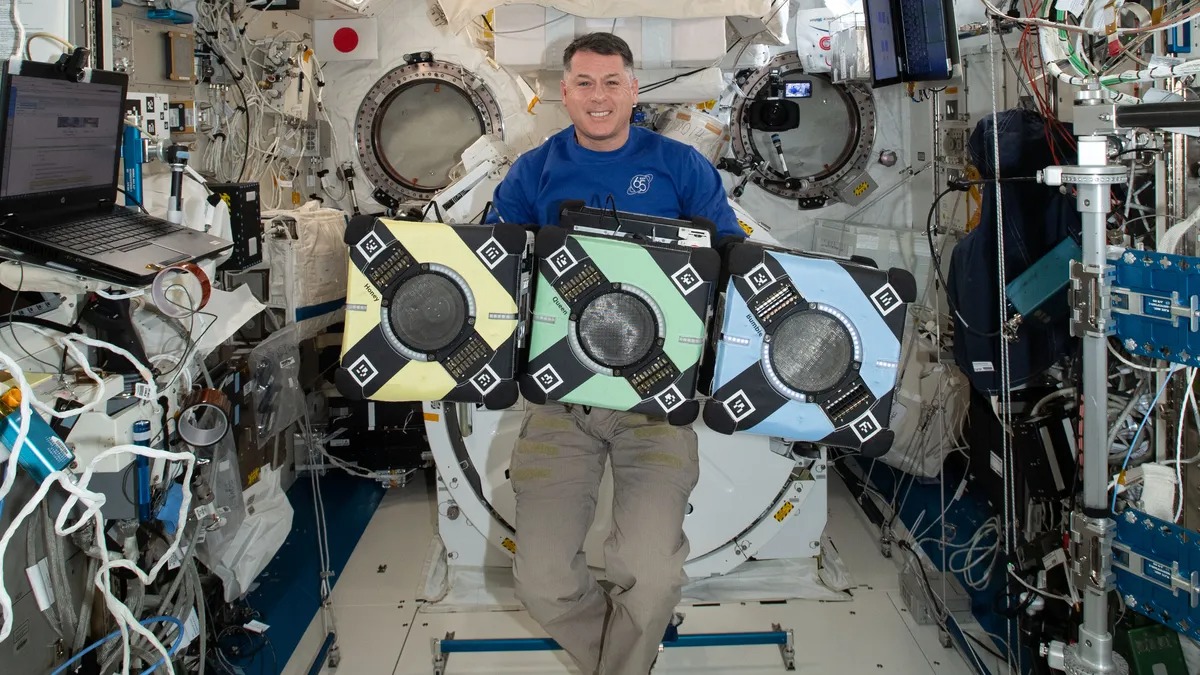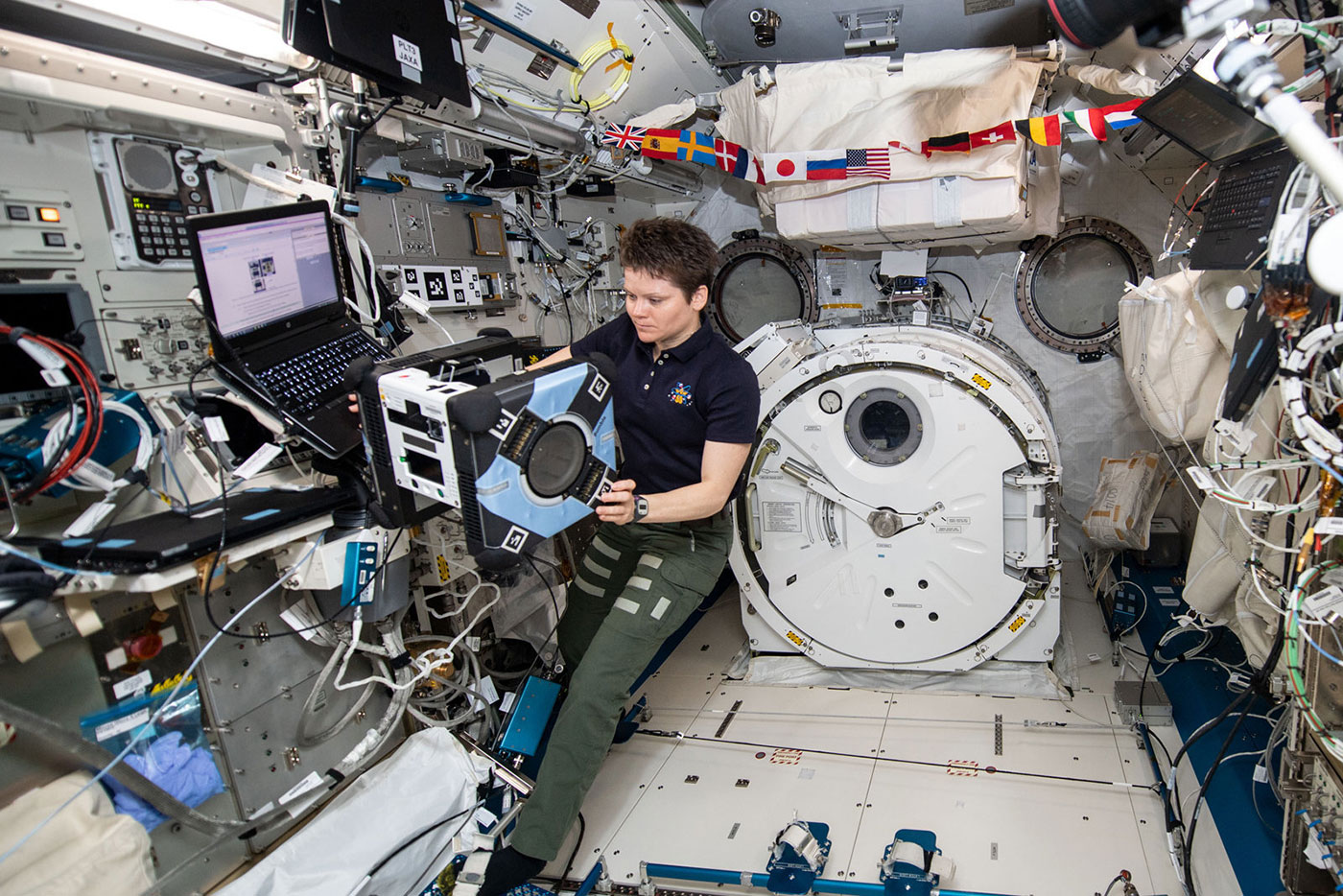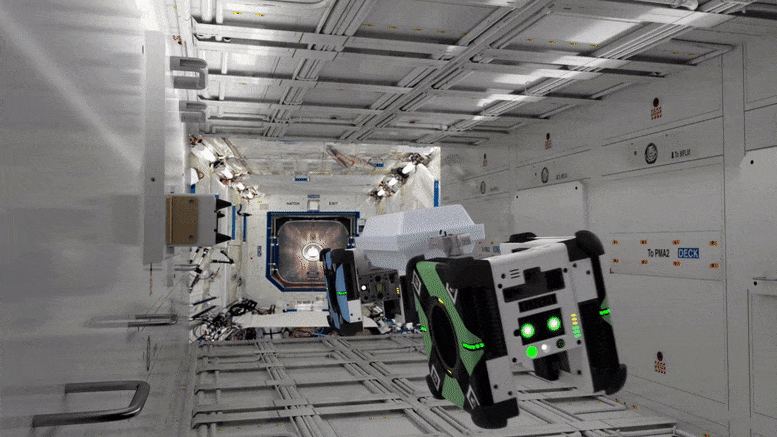The crew of the International Space Station is not only people. At an altitude of 400 km above the Earth, floating next to astronauts in this space laboratory, you will find Honey, Queen and Bumblebee — these are NASA’s flying robot assistants, known as Astrobee. They were delivered to the ISS at various times, starting in 2018. Honey and Bumblebee were the first to appear in orbit, and subsequently Queen joined them.

These robots are very different from our idea of their similarity to humans. Microgravity requires a different approach to working in the cramped spaces of the orbital station. Therefore, each robot has the shape of a cube with a width of 30 cm, and they differ in color. Each of them helps the ISS crew with important but tedious routine tasks, such as inventory, documenting experiments using built-in cameras, or transporting cargo throughout the station.
Space Milestone
Currently, robots have reached a milestone in their space journey. Last week, NASA reported that two robots — Queen and Bumble — successfully operated independently and side by side with humans in different experiments. The mint-green Queen took its first 360-degree panoramic image of the interior of the ISS, while the blue Bumble collected new cartographic data in the Harmony module to test its navigation system and orientation in space. What the pastel yellow Honey was doing, NASA did not report.

According to the Aerospace Administration, both of these experiments are part of the Integrated System for Autonomous and Adaptive Caretaking Project, the organization that controls the Astrobee system. ISAAC researchers are also responsible for managing the docking stations of these robot assistants, where they return to “rest” and recharge when the battery becomes low.
Plans for Astrobee robots
The ISAAC team is trying to make these robots as autonomous as possible. Although astrobots can be controlled remotely manually when necessary. This is due to the fact that the next spacecraft, such as the Gateway lunar space station, will not accept astronauts in the first year of their operation, and the crew will only be Astrobee to monitor the serviceability inside.

As of April 2022, NASA reported that Astrobee robots have worked over 750 hours on the ISS, successfully completed more than 100 tasks and proved its ability to perform feats previously included in the field of science fiction, for example, successful reporting and investigation of simulated anomalies on board the station — all on their own.

“In addition to making spaceflight safer and more cost effective, robotic assistants like the Astrobees could manage routine chores to free up humans for more complex work. One day, these space bots might even blast off with astronauts on future missions to the moon, Mars and, potentially, deep space”, stated in NASA.
Previously, NASA was preparing a unique robot for the moon.
According to CNET
Follow us on Twitter to get the most interesting space news in time
https://twitter.com/ust_magazine

